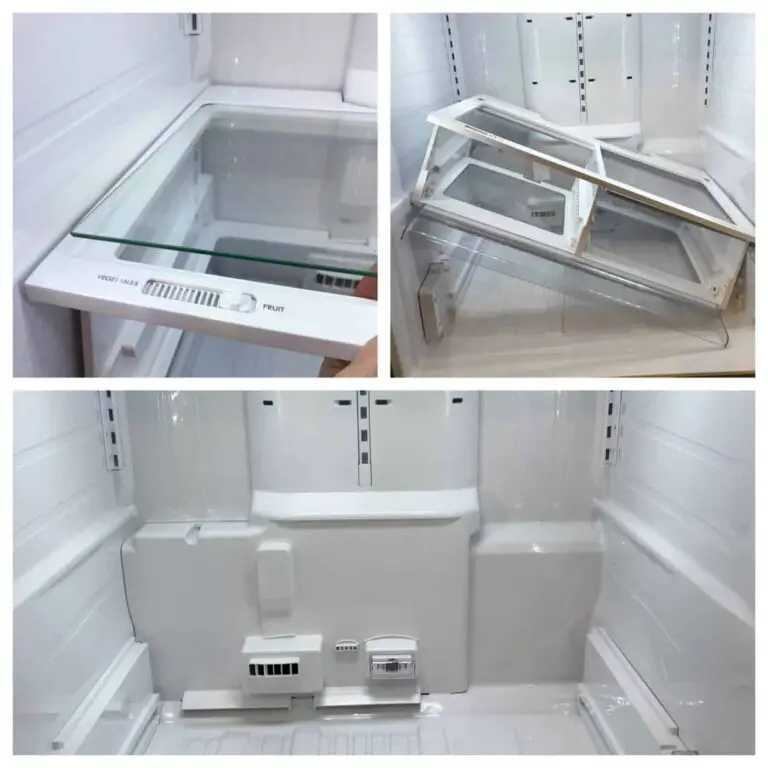Ge Washer Gtw220Ack Low Water Level Troubleshooting Tips
Is your GE Washer GTW220ACK leaving clothes less than clean due to low water levels? You’re not alone, and there’s good news: the solution might be simpler than you think.
Imagine getting back to effortlessly fresh laundry without the headache of repeated cycles or resorting to handwashing. In this guide, you’ll discover practical troubleshooting steps that can restore your washer to its optimal performance. We’ll unravel the mystery behind those frustrating low water issues, giving you the knowledge and confidence to tackle them head-on.
Let’s dive in and ensure your washer is ready to deliver the sparkling clean clothes you expect.
Common Causes Of Low Water Levels
Troubleshooting low water levels in the GE Washer GTW220ACK often involves checking water supply issues. Blocked hoses or faulty water inlet valves can restrict water flow. Ensuring the water pressure is adequate might resolve the problem quickly.
Dealing with low water levels in your GE Washer GTW220ACK can be frustrating. If you’ve ever opened your washer to find your clothes barely wet, you’re not alone. Understanding the common causes of low water levels can help you troubleshoot and fix the issue quickly. Whether it’s a blocked inlet or incorrect settings, let’s dive into practical steps you can take to ensure your washing machine is filling up as it should.Blocked Water Inlet
One common cause of low water levels is a blocked water inlet. You might wonder if something as simple as a blockage can affect your washer’s performance. Yes, it can. Over time, debris or mineral deposits can clog the inlet screens. To fix this, turn off the water supply and disconnect the hoses. Check for any visible obstructions or build-up. Clean the screens gently with a brush or replace them if necessary. This simple step can restore your washer’s water flow and efficiency.Faulty Water Valve
A faulty water valve can also lead to low water levels. The valve controls the amount of water entering the washer. If it’s malfunctioning, you might not get enough water for a proper wash cycle. Test the valve by listening for unusual noises when your washer is filling up. If you suspect it’s faulty, replacing it might be necessary. Consult your washer’s manual or seek professional help if you’re unsure about handling electrical components.Incorrect Settings
Sometimes, the issue might be as simple as incorrect settings. It’s easy to overlook this when you’re in a hurry to get your laundry done. Check your washer settings to ensure you’ve selected the right water level for your load size. Using the wrong setting can result in less water being used, which might not be sufficient for larger loads. Adjust your settings accordingly and see if this resolves the issue. Are you facing any of these problems with your washer? Share your experiences below and let us know how you tackled them. Your insights could help others in the same boat!
Credit: www.amazon.com
Checking The Water Supply
Experiencing low water levels in your GE Washer GTW220ACK can disrupt laundry routines. First, check the water supply connections. Ensure taps are fully open and hoses are clear of blockages.
If your GE Washer GTW220ACK is struggling with low water levels, the first step is to check the water supply. Ensuring a proper water supply can resolve many common washing machine problems. By taking a few simple steps, you can determine if the water supply is the culprit and get your washer back in optimal working condition.Inspecting Hoses
Start by inspecting the hoses connected to your washer. Are they kinked or twisted? A kinked hose can restrict water flow, impacting the water level in your machine. Check for any visible damage or leaks. Even a small puncture can reduce water pressure. Replace any damaged hoses promptly to ensure a steady water supply. Ensure the hoses are securely connected to both the water supply and the washer. Loose connections can cause leaks and reduce water flow. Tighten the connections if necessary.Verifying Water Pressure
Low water pressure can affect your washer’s performance. Do you notice a weaker flow from your taps too? This could indicate a broader issue with your home’s water pressure. Test the water pressure by turning on the taps nearest to the washer. If the flow seems sluggish, you might need to contact your water provider. Sometimes, a simple adjustment to your water system can solve the problem. Consider installing a water pressure gauge. This handy tool can provide a precise measure of your home’s water pressure. It can help you determine if the issue lies with the washer or your home’s plumbing. Addressing these two aspects can often resolve low water level issues in your washer. What discoveries did you make during your inspection? Sometimes, the solution is as simple as tightening a connection or replacing a hose.Evaluating Washer Settings
Assessing washer settings helps troubleshoot Ge Washer Gtw220Ack’s low water level. Adjusting controls ensures optimal performance and prevents operational issues. Explore settings to enhance laundry efficiency and resolve water level concerns effectively.
Evaluating the settings of your GE Washer GTW220ACK can be a game-changer when troubleshooting low water level issues. Sometimes, a simple tweak in the washer’s settings can make all the difference. Understanding the nuances of cycle selection and load size adjustment can help optimize performance and prevent water level problems.Cycle Selection
Choosing the right cycle is crucial for achieving optimal water levels. Each cycle is designed to handle specific types of fabrics and soil levels. For instance, using a “Heavy Duty” cycle for a small load of lightly soiled clothes may result in inefficient water usage. Instead, consider selecting a cycle that matches the load’s requirements. This ensures the washer uses just the right amount of water. Have you ever noticed that different cycles fill the tub differently? Try experimenting with various cycles and observe how the water level adjusts accordingly.Load Size Adjustment
Adjusting the load size setting is another practical way to troubleshoot water level issues. Your washer features options like “Small,” “Medium,” and “Large” loads. If you often find your washer not filling up adequately, it might be worth checking if the load size setting is appropriate for your laundry pile. Have you ever overloaded your washer, hoping to save time, only to end up with partially cleaned clothes? To get the best wash, make sure your load size setting matches the actual size of your laundry. It’s all about balance; not too much and not too little. Next time you’re doing laundry, pay attention to how each setting impacts water levels. Making these small adjustments can lead to big improvements in your washer’s performance.
Credit: www.amazon.com
Inspecting Washer Components
Experiencing low water levels in your GE Washer GTW220ACK? It’s essential to inspect key components. Faulty parts can lead to water level issues. Inspecting these parts is straightforward. Follow these steps for a quick diagnosis.
Examining The Water Valve
The water valve controls water flow into your washer. First, unplug the washer. Safety comes first. Locate the water valve at the back of the washer. Check for visible damage or blockages. Ensure hoses are properly connected. A clogged valve can restrict water flow. Clean any debris you find. Replace the valve if it’s damaged.
Assessing The Pressure Switch
The pressure switch regulates water levels during cycles. Access the switch by removing the top panel. Look for a small, round component with wires. Inspect the hose attached to the switch. Ensure it’s not kinked or blocked. Test the switch with a multimeter. A faulty switch won’t signal water levels correctly. Replace it if necessary.
Testing For Electrical Issues
Experiencing low water levels in your GE Washer GTW220ACK? Electrical issues might be the cause. Testing for electrical problems is crucial. This ensures your washer functions properly. Let’s explore the steps involved in diagnosing potential electrical faults.
Checking Power Supply
Start with the power supply. Ensure the washer is plugged into a working outlet. Check if the power cord is damaged. A faulty cord can disrupt the power flow. Use a multimeter to test the outlet voltage. It should read between 110-120 volts. If not, the outlet might be faulty. Reset any tripped circuit breakers. Also, ensure the fuse is intact. A blown fuse can cut power to the washer.
Reviewing Control Board
The control board is the brain of your washer. If it’s faulty, the machine won’t operate well. First, unplug the washer. This prevents electrical shock. Locate the control panel by removing the top cover. Check for burnt marks or damaged components. These indicate a faulty board. Use a multimeter to test the board’s connections. A lack of continuity suggests a problem. If issues persist, consult a professional. Replacing the control board might be necessary.

Credit: www.youtube.com
Diy Solutions For Low Water Levels
Experiencing low water levels in your Ge Washer GTW220ACK can be frustrating, especially when you’re eager to get your laundry done. But before you call in the professionals, there are some practical DIY solutions you can try. These simple fixes might just save you time and money. Let’s dive into how you can tackle these issues yourself.
Cleaning The Water Inlet
One of the first things you should check is the water inlet. Over time, minerals and debris can build up, causing blockages that restrict water flow. Turn off the water supply to your washer. Carefully detach the hoses, and inspect the inlet screens for dirt or sediment.
If you notice any grime, gently clean the screens with a toothbrush or a soft cloth. Running water through them can also help. This simple step can often restore normal water levels and improve your washer’s efficiency.
Replacing Faulty Parts
If cleaning doesn’t resolve the issue, consider the possibility of faulty parts. The water level sensor or the inlet valve might be malfunctioning. These components are crucial for regulating how much water enters your washer.
To replace a faulty water level sensor, locate it inside the washer near the drum. Make sure you disconnect the power before attempting any repairs. Consult your washer’s manual for specific instructions on removing and installing new parts.
Replacing parts might seem daunting, but with careful attention and patience, it’s achievable. You might surprise yourself with your repair skills. Have you ever fixed an appliance before?
Taking these steps can often resolve low water level issues without professional help. You’ll not only save on repair costs but also gain confidence in handling minor appliance problems. Remember, a little effort can go a long way in maintaining your washer’s performance.
When To Call A Professional
Your GE Washer GTW220ACK is an essential part of your home, making laundry day a breeze. But when low water level issues arise, it can be frustrating. While some problems can be fixed with simple troubleshooting, there are moments when calling a professional is your best option. Knowing when to make that call can save you time, money, and unnecessary stress.
Signs Of Major Issues
It’s crucial to recognize when a minor issue escalates into something more serious. If your washer repeatedly fails to fill with enough water even after basic checks, it may indicate a deeper mechanical problem. Strange noises or persistent leaks are red flags that shouldn’t be ignored.
Have you noticed water pooling around the machine? This could suggest a faulty water inlet valve or a compromised hose. Such issues require professional attention. Don’t wait until minor problems become major headaches.
Cost Considerations
Calling a professional might seem costly, but let’s break it down. Consider the expense of replacing parts yourself, and the time spent trying to fix the problem. Sometimes, DIY repairs can lead to more damage, increasing your costs.
A professional can quickly diagnose and fix the issue, often saving you money in the long run. It’s worth comparing the cost of a repair service to the potential costs of DIY mistakes. Your peace of mind is invaluable, and knowing the job is done right is worth every penny.
Have you tried all the troubleshooting steps and still faced issues? It might be time to ask yourself if the risk of DIY outweighs the benefits. Don’t hesitate to reach out to a skilled technician when you’re unsure.
Frequently Asked Questions
Why Is My Ge Washer Using Less Water?
GE washers use less water for efficiency. Check settings for water level adjustments.
How Do I Increase Water Level In My Ge Washer?
Adjust the water level settings. Use the manual to guide you.
Is Low Water Level Normal In Ge Washers?
Yes, it is normal. Designed for efficient washing and energy saving.
Can Low Water Level Affect Washing Performance?
Sometimes. Check if clothes are properly soaked and adjust settings if needed.
What Should I Check If Water Level Is Too Low?
Ensure water supply is normal. Inspect hoses and connections for any issues.
Conclusion
Troubleshooting your GE Washer GTW220ACK can be simple. Low water level issues often have straightforward solutions. Start by checking water supply lines and ensuring valves are open. Clean clogged filters regularly to maintain smooth water flow. Inspect the washer’s lid switch for any malfunctions.
Sometimes, adjusting the water level settings can resolve the problem. Regular maintenance helps prevent future issues. A well-functioning washer saves time and effort. Consult the user manual if problems persist. For complex issues, consider professional help. A little care keeps your washer running efficiently.






